
Can Mold Affect Your Brain? Mold Toxicity, Mast Cells, and Your Brain and Emotional Health
It’s important you know that this blog post is for informational and educational purposes. It’s not meant to treat any health condition or to be prescriptive for anyone. If you have any medical condition, it is critical you work under the care and guidance of a licensed medical healthcare provider.
How Does Mold Affect Your Brain? Physical and Neurological Symptoms
Many people in our community experience several of these symptoms.
Mold, Mycotoxins, and Your Body
How Mycotoxins Enter Your Body and Brain
Mycotoxin exposure happens when you breath, swallow, or absorb them through your skin.
You can also inhale mold spores that may grow inside you, producing even more mycotoxins!
Related Post: Mold Colonization
These toxins damage your brain through:
- Neuroinflammation – Mold exposure activates mast cells, triggering the release of inflammatory mediators (chemical messengers) throughout your body and brain.
- Neurotoxicity – Mycotoxins directly damage brain cells and neurons, impairing mitochondrial function. This leaves your brain struggling to produce energy.
How Mold Triggers Mast Cells
To understand Mold Toxicity symptoms, we need to take a quick look at mast cells.
Mast cells aren’t the bad guys. They help you stay healthy.
Related Post: MCAS 101
But when they are overactive, they can cause a lot of inflammation!
You have mast cells all through your body. You even have mast cells in your brain.
When they are triggered, mast cells release hundreds of different mediators (chemical messengers).
And mold is a BIG mast cell trigger.
One well known mediator released by mast cells is histamine. Let’s look at how histamine specifically affects your brain.
Histamine and Your Brain: The Neurotransmitter Connection
Histamine plays a key role in the brain as a neurotransmitter.
Neurotransmitters are chemical messengers that carry signals between nerve cells in your brain and body. You can think of them like texts that tell each cell what to do next
When you have Histamine Intolerance or Mast Cell Activation Syndrome (MCAS), it can overstimulate your mast cells and nervous system. Leading to the release of even more histamine, and other mediators. And feelings of anxiety, panic, irritability, or restlessness.
Excess histamine can also bind to receptors in your brainand disrupt the balance of other neurotransmitters that regulate mood, focus, and calm, such as:
- Serotonin
- Dopamine
- GABA
- Acetylcholine
These imbalances may contribute to many of the neurological or psychological symptoms you’ve just read about. And creates a cycle where dysfunctions feed back into one another, continuing the problems.
While it’s not the only reason someone may have histamine issues, Histamine Intolerance is very common with MCAS and Mold Toxicity!
Histamine Intolerance just means you have more histamine than your body can break down.
Managing histamine levels, calming mast cells, and supporting neurotransmitter balance can help. But if you have Mold Toxicity, addressing mold will remove the trigger that’s causing the problem in the first place.
Next, let’s take a look at how these toxins get into your brain.
How Mycotoxins Cross the Blood-Brain Barrier
Your blood-brain barrier (BBB) is a specialized network of cells. These cells normally protect your brain.
They act like a shield that lets good things in (like nutrients) and keeps bad things out (like toxins).
But sometimes, things can get through that shouldn’t. Here’s how mycotoxins cross the BBB:
- Direct entry – some mycotoxins are small and fat-soluble, allowing them to slip through the BBB’s tight junctions into brain tissue, where they disrupt cellular function and trigger inflammation.
- Inflammation-induced breakdown – chronic exposure causes inflammation that weakens your BBB, allowing toxins in.
- Sinus pathway – mycotoxins can bypass the BBB by traveling through your olfactory nerves (nose-to-brain connections) when inhaled. This pathway offers a direct route from your sinuses to your brain’s limbic system.
Once toxins get into your body and brain, they can set off inflammation that shows up as difficult symptoms. Here are some of the signs to look for.
Warning Signs of Mold Toxicity
Common mold symptoms like rashes, sinus congestion, or insomnia can be from mold or many other different causes. This is one reason it’s important to test your body for mold!
But there are a few clues that you may want to look closer at Mold Toxicity. Things like:
- Reoccurring infections that keep coming back – especially gut and sinuses
- Chronic viral infections – like Lyme, EBV (Epstein-Barr), Long Covid
- Low mood, depression, anxiety, or feeling on edge
- Multiple symptoms across multiple body systems
- Lots of sensitivities!
Related Post: Top Signs You Have Mold Toxicity
Next, let’s look at a few possible symptoms of Mold Toxicity we often see in the clinic.
Mold Toxicity Symptoms: Brain, Mood, and Nervous System
These are some common symptoms we see in our clients.
Strong indicators of mold (or Bartonella):
- Internal vibrations / tremors
- Lightning bolt or icepick nerve pains
- Weird skin sensations (crawling, burning)
- Frequent static shocks (possibly due to salt loss)
Common mold-related symptoms:
- Hypersensitivities (foods, chemicals, smells, light, sound)
- Insomnia and poor sleep
- Brain fog, memory problems, difficulty concentrating
- Anxiety, depression, mood swings, irritability
- Chronic fatigue
- Headaches, migraines, head pressure
- Sinus congestion and respiratory issues
- POTS / Dysautonomia
- Palpitations or irregular heartbeat
- Slow healing / impaired immune response
- Dizziness, vertigo, balance problems
- Tremors, muscle twitches, numbness
- Visual disturbances and light sensitivity
- Impaired immune system / slow healing
And there are far more. The list of possible symptoms is long.
Related Post: Mold Toxicity Symptoms
But it’s important to remember that, even though they all seem like they are separate issues, it may all be related to 1 root problem!
Sarah’s Recovery Story: Multiple Symptoms, One Root Cause
Sarah was a professional and mother who had been struggling for 5 years with worsening symptoms when she came to us.
She had always been a little sensitive and prone to anxiety. But things escalated after starting a new job.
At first, she just chalked it up to stress at work. But then she developed seemingly random rashes and some minor gut issues. Then she started noticing she felt terrible after eating. She would later learn this was Histamine Intolerance.
As time went on, her anxiety and brain fog were getting steadily worse. Soon she couldn’t focus on meetings, felt constantly exhausted, and developed panic attacks.
Her search for answers was frustrating and expensive. Multiple specialists gave her different diagnoses and medications. Sometimes things helped a little but more often it just made her feel worse. And there were no real answers.
Then a leak and mold growth was found in the wall right behind her office. Once she moved, she began to feel a bit better. And that made her wonder if the mold could be part of what was missing.
As she learned about Mold Toxicity, things started to click.
She began working on healing from mold. After about a year, her anxiety, brain fog, and food sensitivities were improving. And she was sleeping again.
Another year later, she had finished detoxing and was off all medications. She no longer fit the criteria for many of her prior diagnoses. She had her life back, and most of her symptoms were gone.
All of her “separate” conditions had one, hidden root cause—Mold Toxicity!
Sarah’s story is similar to so many people we work with. And it illustrates a really important point: going beyond symptoms to address the root causes means your whole body heals!
It’s fine to use support to help relieve symptoms. But finding and removing the root of the problem takes care of the cause for the symptoms.
How Mold Toxicity Affects Multiple Body Systems
When mold triggers chronic inflammation, it affects many areas in your body.
You can notice changes in:
- Your Nervous System – testing reveals cognitive impairment in mold-exposed people. Inflammation also disrupts neurotransmitter balance, causing mood changes and cognitive dysfunction.
- Your Immune System – constant mycotoxin exposure and Mold Toxicity creates immune dysregulation. Your immune system becomes both overactive and underactive.
- Your Gut – mycotoxins damage your gut wall, creating Leaky Gut. Since your gut processes and produces nutrients, neurotransmitters, and more, this directly impacts brain function and mood.
- Your Hormones – inflammation disrupts your endocrine system. Thyroid problems, adrenal fatigue, and hormone imbalances connect to the same inflammatory root.
Everything in your body is connected and works together. As you can see, mold doesn’t affect just 1 part of your body. It has potential impacts on many body systems.
And your nervous system can actually have a big impact on how you experience Mold Toxicity, MCAS, and other chronic illnesses, too. Keep reading to find out how.
The Trauma Connection
Trauma is a risk factor for developing many chronic illnesses, including mold illness.
If you’ve experienced significant trauma (big T or little t), your nervous system is already primed to be more reactive.
When trauma and environmental triggers like mold combine, they create perfect conditions for health problems.
Related Post: How to Heal from Trauma with MCAS
Studies show that children who experience trauma growing up are much more likely to develop illnesses later.
Even without trauma, chronic illness creates nervous system patterns that need calming so your body can prioritize healing.
The good news is that even if trauma, Mast Cell Activation Syndrome, or chronic illness has left your nervous system on high alert, you’re not stuck there.
With the right supports, your body and brain can begin move toward healing.
So, what does that healing process look like when it comes to mold and your brain? Here are some of the key steps we use in the MC360 Clinic.
How to Heal Your Brain from Mold Toxicity: 4 Essential Steps
At the MC360 Clinic, we see recovery as a spiral process. It builds layer by layer.
Healing from complex chronic illness like Mold Toxicity is not about one quick fix, especially when you are sensitive.
It’s about removing triggers while adding supports that allow healing to unfold.
Step 1: Remove the Mold Source
Eliminate ongoing mold exposure through remediation or moving from the moldy environment.
Look for water damage, dampness, musty smells, and visible mold. But know that you can have high levels of mold that are completely hidden. Good testing can help find it.
Related Post: Testing Your Home for Mold
Step 2: Support Your Nervous System
You read earlier about how mold exposure dysregulates your nervous system, keeping you in fight-or-flight. And calming it lets your body prioritize healing.
A few beginning practices you can consider:
- Practice vagus nerve exercises to help shift into relaxation and healing
- Use resonant breathing to shift from stress states
- Try simple grounding exercises (barefoot standing/walking, orienting, 5 Senses)
Related Post: Nervous System Balance and How to Calm Your Nervous System with Mast Cell Activation Syndrome
Step 3: Support Your Brain and Body
Remember that the basics are often the best foundation!
Sleep
We can’t emphasize enough how important sleep is for healing.
During sleep your brain:
- Clears waste
- Repairs itself
- Consolidates memory
- Strengthens neural connections
Poor sleep disrupts all of these and makes it harder to function and heal!
For example, during deep sleep your hippocampus (part of your brain) transfers memories to long-term storage. This is part of why poor sleep worsens memory problems.
And sleep problems are a common issue with Mold Toxicity.
Related Post: Fixing Sleep Challenges in Mast Cell Activation Syndrome and Histamine Intolerance
Mast Cell Stabilization
Since mold activates mast cells, triggering histamine and brain inflammation, calming them is important.
Getting out of mold is big! And nervous system work helps.
But supplements or medications often also help lower reactivity and alleviate symptoms through the process.
Related Post: Best Antihistamine
Omega-3 Fatty Acids
Omega-3 fatty acids support brain tissue repair and reduce inflammatory chemicals that affect memory and mood.
Many sensitive people don’t tolerate fish oil though because of histamine issues.
Most of our clients do better with SPMs (Specialized Pro-resolving Mediators). These are the compounds your body makes from omega-3 oils.
This brand of SPMs is one we like.
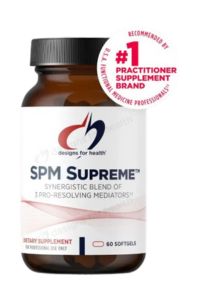
These have lemon flavoring and olive oil. If you are still very sensitive or have severe Salicylate Intolerance, you may not tolerate it yet.
Step 4: Support Elimination
Your body needs help as it works to remove mycotoxins and inflammatory compounds.
In the Mast Cell 360® Method, focused mold detox comes after stabilization!
But that doesn’t mean your body isn’t already working on detoxing every day. And you can start supporting it now with these foundations.
Hydration
The recommended water intake is half your body weight in ounces every day. For example, a 150 pound person would drink 75 ounces of water.
Adding electrolytes, as tolerated, can be helpful. Inflammation and detox use them up, and most people are low.
Many people who are sensitive find it helpful to start with “drops and sprinkles”.
These are 2 options we like:
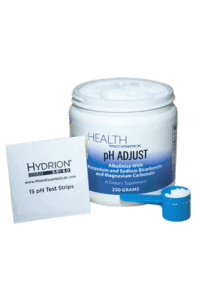
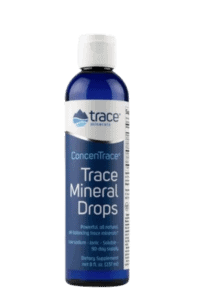
Related Post: The Importance of Clean Filtered Water
Adrenal Support
Mold exhausts your adrenals and uses up minerals.
Your adrenals are 2 small glands that sit on top of your kidneys. And they play a big role in keeping your body balanced.
Supporting them with hydration and electrolytes is a good start!
Nervous system work also supports your adrenals.
Related Post: Cortisol and Adrenal Support
Daily Bowel Movements
Without daily elimination, you reabsorb toxins.
This is an important piece to work on if you aren’t having daily bowel movements.
Hydration, electrolytes, and gentle movement help. If you need more ideas, watch our video: Supporting Digestion and Motility with MCAS
Gut Health
Since mycotoxins damage your gut and affect everything from motility to nutrient absorption, supporting digestion and gut function is important.
Related Post: Leaky Gut Support with Enzymes, Betaine HCL, and Short-Chain Fatty Acids (SCFAs)
Your gut is called your “second brain” for a reason.
It houses your enteric nervous system (ENS). Your ENS is a vast network of neurons (specialized nerve cells) that communicate directly between your gut and your brain.
And your microbiome (gut bugs) produce many byproducts that affect how nearly every part of your body functions.
This includes nutrients and neurotransmitters that help regulate mood, sleep, and more.
Gut support is important to break down and absorb the nutrients you need to heal. And to support your body and brain functions.
We know all of this can feel overwhelming or even scary. We want to offer you some encouragement and simple steps next.
Can Your Brain Recover from Mold? Next Steps
The short answer is yes!
You don’t have to accept brain fog, memory loss, or neurological symptoms as permanent. Thousands have recovered from Mold Toxicity by addressing the root cause.
And thanks to discoveries about neuroplasticity (your brain’s ability to adapt and grow), we now know your brain can form new pathways and heal once toxins are removed and inflammation is reduced.
Here are some key takeaways and steps to get you started:
- Download our FREE Mold Toxicity Guide with symptom quiz
- Test for indoor mold in your home (and maybe other places you spend a lot of time like work, school, etc)
- Test your body for mycotoxin levels
- Start nervous system work
- Support stabilization before detox
Just keep taking that next step. Those are the people who get better.
And if you aren’t sure what to do next or you would like some guidance from a knowledgeable practitioner, we are here to help!
Can mold affect your brain? Yes. But your body and brain can heal!
What brain symptoms have you noticed?
More Mold and MCAS Resources
- Mold Toxicity Symptoms: Is This the Root Cause of Your Mast Cell Activation Syndrome and Histamine Intolerance?
- Mold Toxicity in Kids
- Testing Your Home for Mold
- Testing Your Body for Mold
- How to Detox Mold Gently with Mast Cell Activiation Syndrome
- Lyme, SIBO, Candida, EBV in Mold Toxicity – Why won’t they go away? What do you do to get rid of them?
References
Baldo, J. V., Ahmad, L., & Ruff, R. (2002). Neuropsychological Performance of Patients Following Mold Exposure. Applied Neuropsychology, 9(4), 193–202. https://doi.org/10.1207/S15324826AN0904_1
Kuć-Szymanek, A., Kubik-Machura, D., Kościelecka, K., Męcik-Kronenberg, T., & Radko, L. (2025). Neurotoxicological Effects of Some Mycotoxins on Humans Health and Methods of Neuroprotection. Toxins, 17(1), 24. https://doi.org/10.3390/toxins17010024
Crago, B. R., Gray, M. R., Nelson, L. A., Davis, M., Arnold, L., & Thrasher, J. D. (2003). Psychological, Neuropsychological, and Electrocortical Effects of Mixed Mold Exposure. Archives of Environmental Health: An International Journal, 58(8), 452–463. https://doi.org/10.3200/AEOH.58.8.452-463
Ratnaseelan, A. M., Tsilioni, I., & Theoharides, T. C. (2018). Effects of mycotoxins on neuropsychiatric symptoms and immune processes. Clinical Therapeutics, 40(6), 903–917. https://doi.org/10.1016/j.clinthera.2018.05.004
Harding, C. F., Pytte, C. L., Page, K. G., Ryberg, K. J., Normand, E., Remigio, G. J., DeStefano, R. A., Morris, D. B., Voronina, J., Lopez, A., Stalbow, L. A., Williams, E. P., & Abreu, N. (2019). Mold inhalation causes innate immune activation, neural, cognitive and emotional dysfunction. Brain Behavior and Immunity, 87, 218–228. https://doi.org/10.1016/j.bbi.2019.11.006
Springer, K. W., Sheridan, J., Kuo, D., & Carnes, M. (2003). The long-term health outcomes of childhood abuse. An overview and a call to action. Journal of general internal medicine, 18(10), 864–870. https://doi.org/10.1046/j.1525-1497.2003.20918.x
Taylor S. E. (2010). Mechanisms linking early life stress to adult health outcomes. Proceedings of the National Academy of Sciences of the United States of America, 107(19), 8507–8512. https://doi.org/10.1073/pnas.1003890107

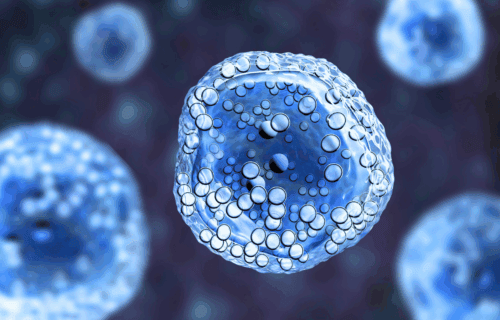
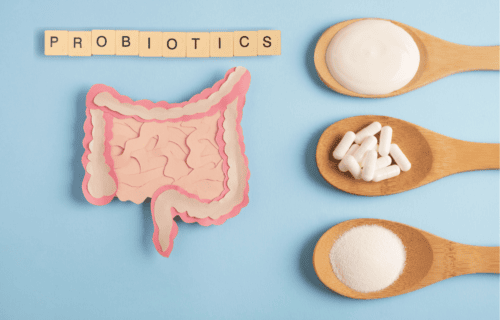

Add A Comment